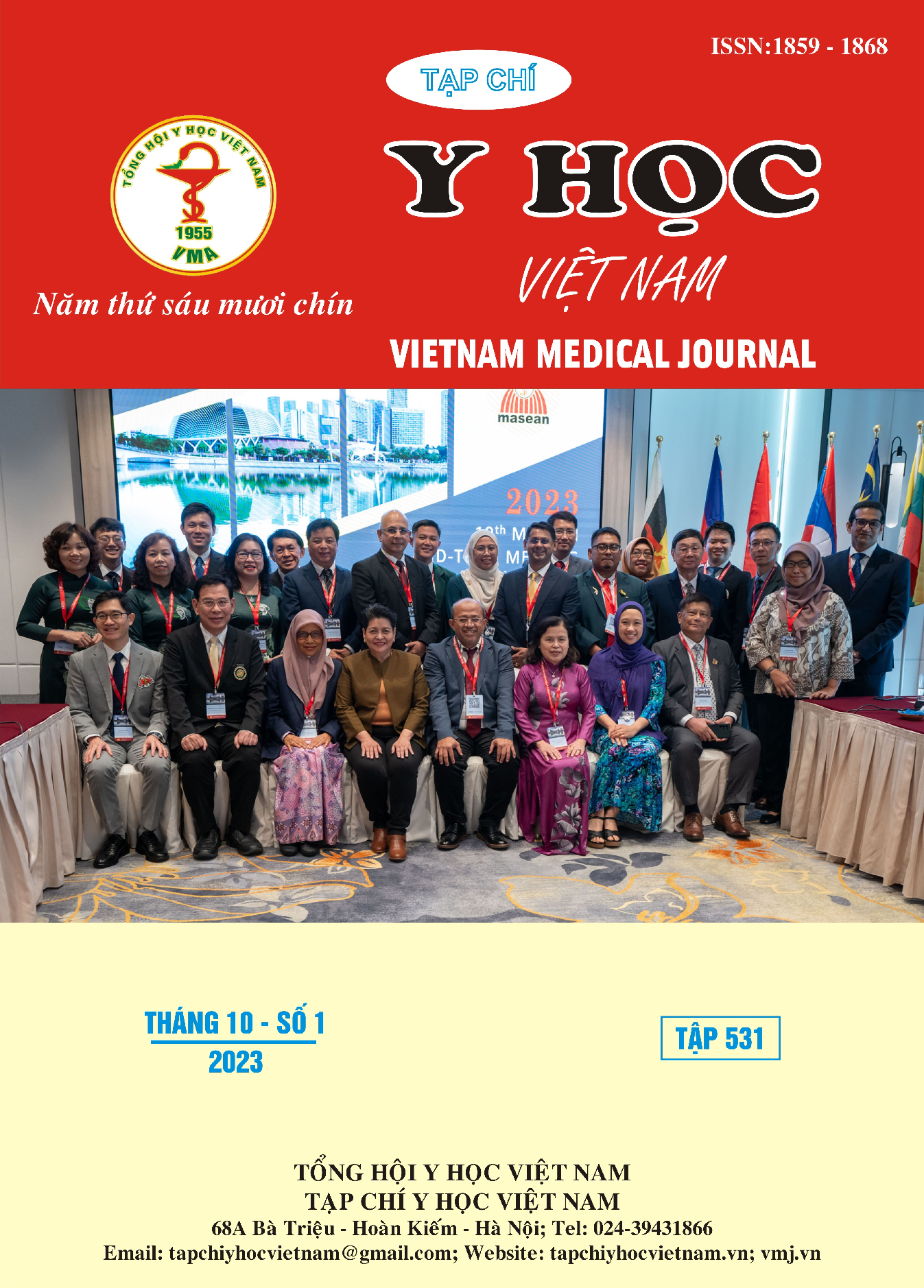SURVEYING THE RISK OF OSA IN PATIENTS UNDERGOING ELECTIVE SURGERY AT PEOPLE’S HOSPITAL 115
Main Article Content
Abstract
Background: Obstructive Sleep Apnea (OSA) is a sleep-breathing disorder that affects 9 – 25% of the general adult population. In anesthesia and surgery, undiagnosed OSA may be associated with an increased risk of intra- and postoperative complications, increased costs of ICU care, and prolonged hospital stays. Obstructives: to survey the risk of OSA in patients undergoing elective surgery at People’s Hospital 115. Methods: A cross-sectional study on 89 patients undergoing elective surgery at People’s Hospital 115 from April/2023 to June/2023. Results: 31,5% of elective surgery patients were at risk of OSA. The average age was 63,5 ± 13. The majority of patients were male (75%). Hypertension (78,6%) and diabetes mellitus (42,9%) are two common diseases. Frequent clinical symptoms are snoring (96,4%). Besides that, patients who are at risk have difficult intubation (25%). The prevalence of postoperative respiratory and cardiovascular complications and delirium increased in this group, reaching statistical significance (p < 0,05). Among them, decreased oxygen saturation is the most common complication. Conclusion: Patients who are at risk of OSA tend to have an increased rate of postoperative complications. Therefore, it’s necessary to use the STOP-BANG questionnaire to assess the risk of OSA during preoperative anesthesia assessment, especially in patients who are male, overweight and obese, old age, hypertension and diabetes.
Article Details
Keywords
obstructive sleep apnea (OSA), STOP-BANG questionnaire, postoperative complications.
References
2. Ngô Thế Hoàng, Phạm Thị Phương Oanh, Phạm Thị Pho Lia, Lê Đình Thanh,Nguyễn Đức Công (2015). Một số đặc điểm của hội chứng ngưng thở khi ngủ tắc nghẽn tại khoa hô hấp bệnh viện Thống Nhất. Tạp chí Y học TP.Hồ chí minh, Phụ Bản Tập 19, Số 6: 277 – 281.
3. Nguyễn Hưng Hòa, Phan Hoàng Trọng, Nguyễn Văn Chinh (2014). Những điều cần lưu ý khi gây mê cho bệnh nhân ngủ ngáy. Tạp chí Y học TP. Hồ Chí Minh, Phụ bản tập 18, số 5: 20-25
4. Phillips, C. L., & O’Driscoll, D. M. (2013). Hypertension and obstructive sleep apnea. Nature and science of sleep: 43-52
5. Plunkett, A. R., Mclean, B. C., Brooks, D., Plunkett, M. T., & Mikita, J. A. (2011). Does difficult mask ventilation predict obstructive sleep apnea? A prospective pilot study to identify the prevalence of osa in patients with difficult mask ventilation under general anesthesia. Journal of Clinical Sleep Medicine
6. Sun, X., Yu, J., Luo, J., Xu, S., Yang, N., & Wang, Y. (2022). Meta-analysis of the association between obstructive sleep apnea and postoperative complications. Sleep Medicine, 91: 1-11.
7. Vasu TS, Doghramji K, Cavallazzi R, et al (2010). Obstructive Sleep Apnea Syndrome and Postoperative Complications: Clinical Use of the STOP-BANG Questionnaire. Arch Otolaryngol Head Neck Surg,136(10): 1020–1024
8. Vũ Bích Nga, Đào Thị Gấm, Lê Hoàn (2022). Xác định nguy cơ mắc ngưng thở khi ngủ bằng Bộ câu hỏi STOP – BANG trên bệnh nhân đái tháo đường typ 2. Vietnam Journal of Diabetes and Endocrinology, (52): 67-71


